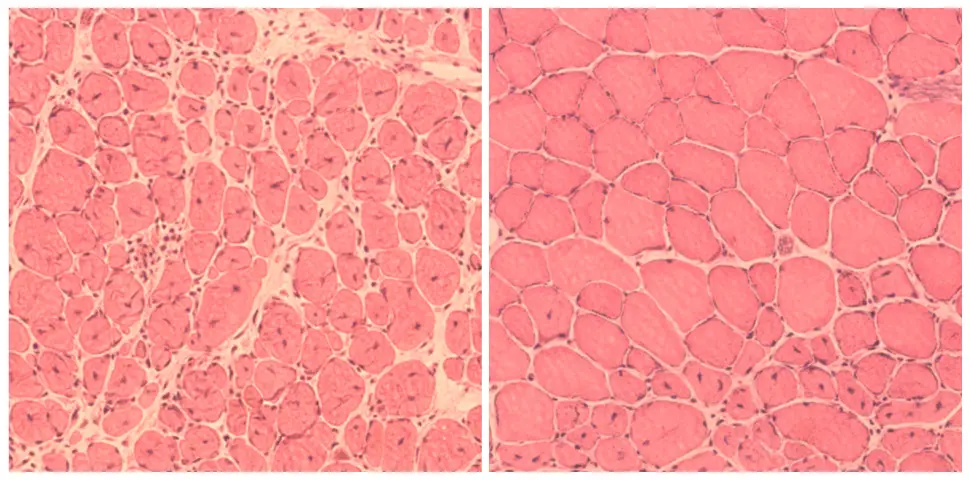
17th December 2016 Aging partially reversed in mice Scientists have used a new form of gene therapy to partially reverse aging in mice. After six weeks of treatment, the animals appeared younger, had straighter spines and better cardiovascular health, healed quicker when injured, and lived 30% longer. Trials on humans could follow within the next decade.
Researchers at the Salk Institute in California have found that intermittent expression of genes normally associated with an embryonic state can reverse the hallmarks of old age. This approach was tested on human skin cells in a dish, causing them to begin looking and behaving young again. But not only that – it also resulted in the rejuvenation of mice with a premature aging disease, countering signs of aging and extending the animals' lifespans by 30%. This early-stage work provides insights into the cellular drivers of aging, as well as possible therapeutic approaches for improving human health and longevity. "Our study shows that aging may not have to proceed in one single direction," says Juan Belmonte, a professor in Salk's Gene Expression Laboratory and the senior author of a paper appearing this week in the journal Cell. "It has plasticity and, with careful modulation, aging might be reversed." As people in modern societies live longer, their risk of developing age-related diseases goes up. In fact, the data shows that the biggest risk factor for heart disease, cancer and neurodegenerative disorders is simply age. One clue to stopping or reversing aging lies in the study of cellular reprogramming – a process in which scientists can convert any cell type into induced pluripotent stem cells (iPSCs), based on the expression of four genes known as the Yamanaka factors. These iPSCs, like embryonic stem cells, are capable of dividing indefinitely and becoming any cell type present in our bodies. "What we and other stem cell labs have observed is that when you induce cellular reprogramming, cells look younger," says Alejandro Ocampo, researcher and a co-author of the paper. "The next question was whether we could induce this rejuvenation process in a live animal." While cellular rejuvenation sounds desirable, a process that works in laboratory cells is not necessarily good for an entire organism. For one thing, although rapid cell division is critical in growing embryos, in adults such growth can be an indication of cancer. For another, having large numbers of cells revert back to embryonic status in an adult can result in organ failure, ultimately leading to death. For these reasons, the Salk team wondered whether they could avoid cancer and improve aging characteristics by inducing the Yamanaka factors for just a short period of time. Sure enough, their "partial" cellular reprogramming approach did not cause tumours or death. This was the first study in which cellular reprogramming extended lifespan in a live animal. Previous efforts resulted in mice that either died immediately, or developed extensive tumours: "We were surprised and excited to see that we were able to prolong the lifespan by in vivo reprogramming," explains co-first author Pradeep Reddy. "In other studies, scientists have completely reprogrammed cells, all the way back to a stem-cell-like state. But we show, for the first time, that by expressing these factors for a short duration, you can maintain the cell's identity while reversing age-associated hallmarks." The Salk team used their short reprogramming method during cyclic periods in live mice with progeria. The results were striking: compared to the untreated mice, the reprogrammed mice looked younger; their cardiovascular and other organ function improved, and they lived 30% longer, yet did not develop cancer. On a cellular level, the animals showed the recovery of molecular aging hallmarks that are affected not only in progeria, but also in normal aging. The Salk researchers believe that induction of epigenetic changes, via chemicals administrated in creams or injections, may be the most promising approach to achieve rejuvenation in humans. However, due to the complexity of aging, these therapies may take up to 10 years to reach clinical trials. "Obviously, mice are not humans and we know it will be much more complex to rejuvenate a person," says Prof. Belmonte. "But this study shows that aging is a very dynamic and plastic process – and therefore, will be more amenable to therapeutic interventions than what we previously thought."
---
Comments »
|







